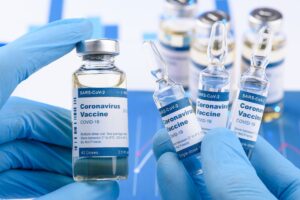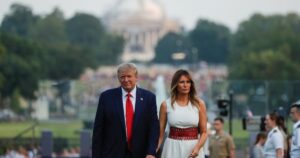Washington, D.C. – In March, the Pentagon received $1 billion dollars in funding to build up the country’s supply of medical equipment. The public is now aware that the money has been funneled into defense contracting efforts to manufacture things such as jet engine parts, body armor and dress uniforms.
This is not an isolated case. On May 29, Defense News reported that the Pentagon spent less than a quarter of the $10.6 billion Congress gave it to protect military personnel and American industry to procure face masks, ventilators and other products hospitals need in their fight against the COVID-19 virus. From the same Defense News report, Democratic senators say the Pentagon had placed on contract 23% of the funds it was provided nine weeks prior, as part of the Coronavirus Aid, Relief and Economic Security (CARES) Act of 2020.
Within the month of June, around 1,000 healthcare professionals, including a six-year rapid response (or code blue) nurses at Riverside Community Hospital (Riverside, CA), Erin McIntosh, protested the issues surrounding the lack of personal protective equipment (PPE) and hospital understaffing during the pandemic. As hospital staff
“When the pandemic hit, I thought HCA, our hospital, would be revving up the resources, which we would have more resources, more staff, but unfortunately it was the opposite. They started making cuts, and we’re working with skeleton crews, we’re being cut to the bare minimum,” McIntosh added.
In August 2020, Kaiser Health News reported that state health care elected officials and manufacturing industry representatives said that logistical challenges contributed to shortages of personal protective equipment and medical supplies could persist for years without strategic government intervention. On the cusp of flu season, this information reached the United States seven months after the arrival of COVID-19. Some state emergency management agencies are preparing for a fall surge in potentially deadly COVID-19 cases.
Hospitals nationwide were, and in some cases still are, reporting rolling shortages of supplies that range from specialized beds, disposable isolation gowns, to thermometers, according to The Guardian. The Guardian and Kaiser Health News have so far identified reports of 679 frontline healthcare workers who have died of COVID-19 in the U.S. amid continuing reports of long hours waiting for urgent care and shortages of PPE.
While healthcare workers are making sacrifices, HCA Healthcare, the largest for-profit hospital chain in the U.S., has reportedly received about $1 billion in federal coronavirus relief that does not have to be repaid, and an estimated $4 billion in accelerated Medicare payments, according to the
Nine Senate Democrats wrote to Defense Secretary Mark Esper, calling for him to provide Congress with a spending plan for the remaining funds for the Department of Defense (DOD). Defense Appropriations Subcommittee Vice Chairman Dick Durbin, D-Ill., led the letter, which was obtained by Defense News.
“We are concerned by the delays in providing this important information, the lack of transparency in the use of emergency funds appropriated to the Department, and troubling signs the funds will instead be spent for other purposes,” the letter read. “Lacking a spend plan, we are not even sure what those purposes may be.”
The CARES Act was passed earlier this year, giving the Pentagon money to “prevent, prepare for, and respond to coronavirus.” But the Defense Department soon began reshaping how it would award the money in a manner that served as a major departure from Congress’ original intent, even with there still being a major gap in medical efforts to combat the virus.
Robert Redfield, director of the Centers for Disease Control and Prevention, said during a senate hearing that many states still desperately need roughly $6 billion to distribute vaccines to Americans come early next year. And many U.S. hospitals are still facing a severe shortage of N95 masks as reported in the Washington Post. These are the types of problems that the money was originally intended to address.
Mandy Smithberger, a defense analyst at the watchdog group Project on Government Oversight, said, “This is part and parcel of whether we have budget priorities that actually serve our public safety or whether we have a government that is captured by special interests.”
The $1 billion funds are just a fraction of the $3 trillion in emergency spending that Congress approved earlier this year to deal with the pandemic. However, tens of millions of dollars in bailout cash were redirected to firms that were not originally considered for COVID-19 relief. Officials are experiencing difficulties tracking down how and where the money was spent, especially in cases where members of Congress intervene when changes in the funding appropriation are made.
The Trump administration has done very little to limit defense contracting companies from gaining access to multiple bailout funds simultaneously and has not required the companies to refrain from layoffs as a condition of receiving the awards according to CBS News. CNN reports that firms like Rolls-Royce and ArcelorMittal received $183 million to “maintain the shipbuilding industry” while millions were given for space surveillance, drone and satellite technology. American Woolen Company, a manufacturer of Army dress uniform fabric in Connecticut, was awarded $2 million, according to their website.
Some defense contracting companies were awarded funds to include tapping into the Paycheck Protection Program (PPP) that allocated billions of dollars in forgivable loans to small businesses impacted by the coronavirus pandemic according to CNN. The PPP was an approved $521 billion to help small businesses keep workers on their payrolls through low-interest, forgivable loans and has been the central pillar of the federal government’s economic response to the COVID-19 pandemic. However, the PPP program did not provide the aid to most small businesses seeking the loans that it was originally intended for.
According to KHQ News, the website that hosted the online application suffered technical difficulties that frustrated small business owners in dire need of aid and who were left out of the first round of funding. As reported in NPR, The Small Business Administration (SBA) showed in their reports that through May 1, 2020, $175.7 billion in loans was approved five days into the program’s second round of funding. According to a report by the U.S. Small Business Administration
Pentagon spokesperson Jessica Maxwell said the CARES Act does not require all the money distributed to be spent on medical resources.
“The Department of Defense is using the $1 billion appropriated by the ‘CARES’ Act to the Defense Production Act, which made $1B available ‘to prepare for, prevent and respond to the coronavirus’. The law set forth no limitation requiring use only in the medical supply industrial base,” Maxwell said in a statement.
The report comes full circle after it was announced that the COVID-19 death toll has officially reached 200,000, an unfortunate milestone during this public health crisis. President Donald Trump readily continues to downplay the virus and spread misinformation about which demographics are most vulnerable to infection, as reported in Vanity Fair. According to Task & Purpose, Reps. Mark Pocan, of Wisconsin, and Barbara Lee, of California, wrote a letter on Tuesday to Democratic leaders urging them to “commence oversight investigations and public hearings into this matter immediately.”
“The culture within this administration of neglecting the needs of the American people in favor of bloated defense spending for endless wars must come to an end,” Lee said in a statement.




